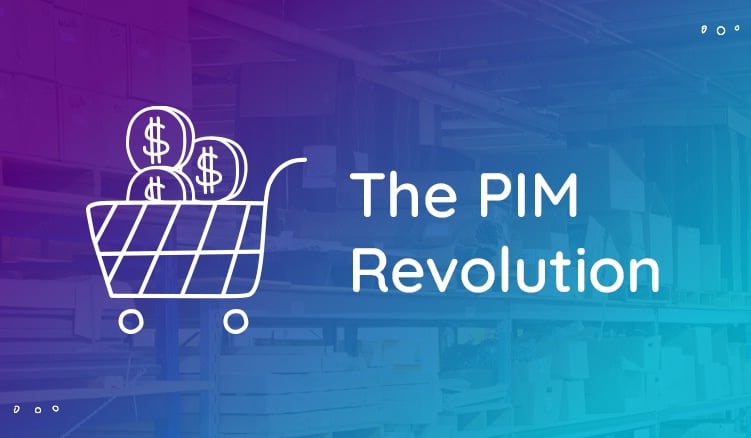
Keep the good stuff coming
Subscribe to our blog newsletter and get monthly content that helps you manage product data smarter.
No spam. Just real value.
The product information management market is exploding.
Why?
Because as more and more ecommerce retailers start marketing and selling their products across multiple channels, they need better and better product information management (PIM) software to help them centralize, optimize, distribute, and analyze product data.
As shopping goes increasingly digital and omnichannel, the product information management revolution is sure to continue. Keep scrolling for all the charts you’ll ever need to learn the what, the how, and the why behind the trends that are driving the need for PIM solutions.
The Retail Apocalypse is Picking Up Speed
The height of the Great Recession wasn’t the worst we’d see for brick-and-mortar retail. Since 2015, annual store closings and bankruptcies have risen steadily year over year.
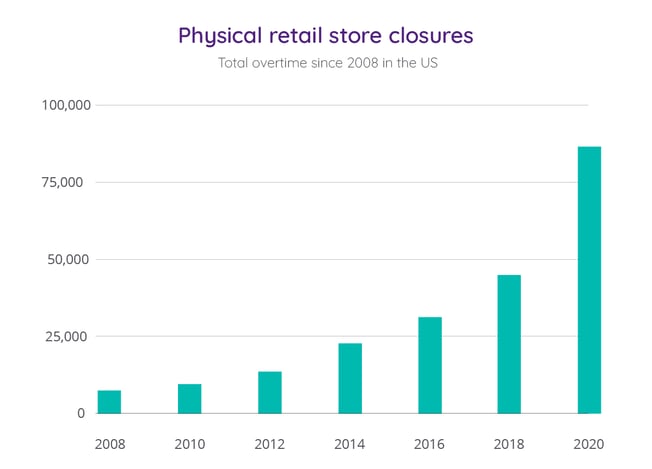
No one is immune. Stores like Sears, Toys “R” Us, Claire’s, Brookstone, Kmart, Shopko, and Payless have been overtaken by the retail apocalypse in recent years—each announcing major store closures and bankruptcies since 2017. However, retailers such as Target, Walmart, Warby Parker, and Amazon, which focus on online marketing and sales, are thriving.
This doesn't mean brick and mortar is totally dead; it is just part of a larger multichannel retail strategy. Take department store giant Macy's. In 2019, they announced that they are optimizing (read: downsizing) their physical stores to focus on accelerating their growth by leaning into their digital $6 billion per year sales engine.
This is a testament to how people want to shop. Where in the past, square footage and huge mall real-estate was the king of convenience, now there is nothing easier than online shopping.
- Unlimited Shelf Space - Customers can find what they want from one location
- Personalized Experience - Suggestion algorithms and preferences help customers browse through things they actually might want.
- No Pressure Environment - Apart from insistent pop-up ads, there is no retail staff to put the pressure on to buy now. The experience is more private and less anxiety-inducing.
- Cost Savings - From comparison shopping to simply not spending the gas money, shopping online saves customers their hard-earned dollars (so they can spend it on more stuff)
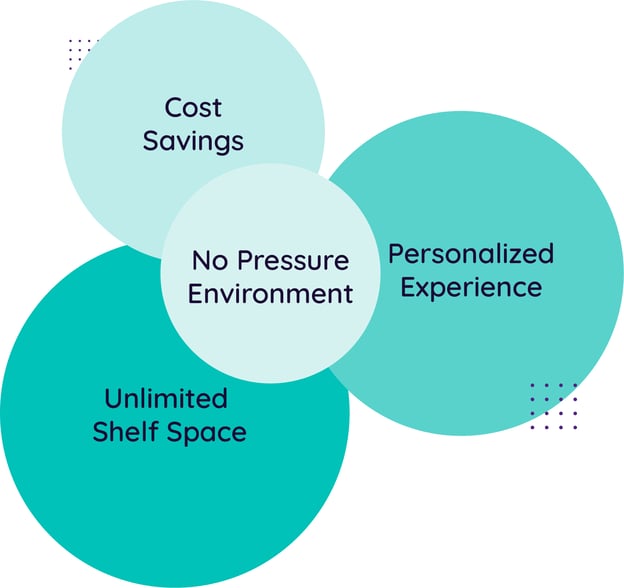
No wonder...
Ecommerce Sales are Booming
In 2014, global ecommerce sales reached over $1 trillion. By 2018, they more than doubled to reach $2.8 trillion. And this past year, 2020, sales boomed to $4.28 trillion worldwide. While global retail sales are also climbing, they’re doing so much more slowly than the explosive growth we’re seeing in ecommerce.
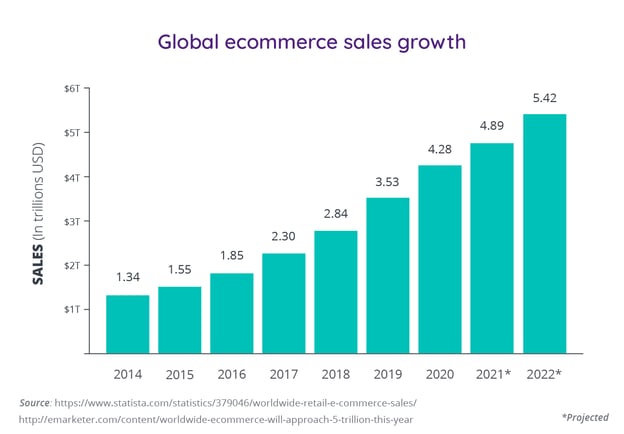
How Ecommerce Impacts Product Content
As ecommerce sales quickly overtake a larger percentage of the overall global retail market, sellers face new challenges. Online marketing and sales require a lot more data than traditional, brick-and-mortar retail. From product descriptions to SKUs, pricing, images, shipping information, taxes, materials, dimensions, manufacturing information, and more—digital retailers must provide more product information to ensure shoppers know exactly what they’re getting when they click “add to cart.”
Our customers at Plytix average about 80 to 100 attributes per SKU, some have up to 200 depending on their strategy and industry needs. So, if we low-ball the estimate to 80 attributes per SKU and compare it to some well-known retailers, we get numbers that look like this:
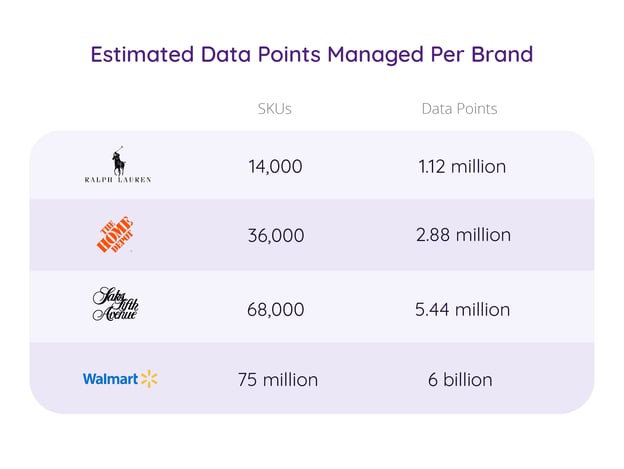
Digital retailers need a way to make sure all this data is up to date and available to every team member, in any department, at any given time. While the brand teams like Ralph Lauren may need to manage and distribute their own branded content, retailers like Walmart need to gather all of it. The job is equally difficult on both sides of the coin if there is nowhere to properly store, manage, update, and distribute that content.
That’s where PIM makes all the difference and why the need for PIM software is growing so fast.
Modern PIM software is absolutely necessary for retailers who want to store and manage all that product data efficiently and securely. Think about the simple act of updating prices or compliance information. A PIM makes batch editing like this easier and more accurate.
Good PIM software gives retailers a single source of truth from which they can distribute to a variety of sales channels, create product catalogs, and analyze metrics that can help them improve their customer experience and increase sales.
The Market for PIM Software is Exploding
As ecommerce retail sales grow, so does the market for PIM solutions.
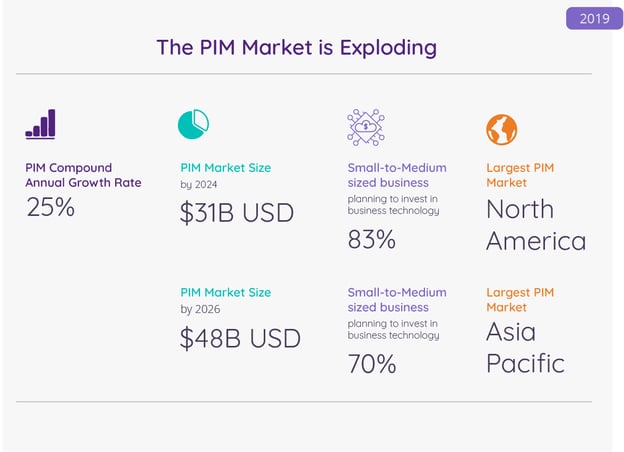
In 2019, 83 percent of small-to-medium-sized businesses (SMBs) reported they had plans to invest in business technology, and 70 percent planned on investing in cloud-based technologies specifically. The need for intuitive, affordable, and scalable cloud-based PIM solutions with features that appeal to small and medium businesses is clear.
So it’s no surprise that the PIM market is experiencing a compound annual growth rate of more than 25 percent. The market is projected to be worth $31 billion by 2024 and $48 billion by 2026.
Multichannel is the Standard
One of the drivers of that explosive growth in the PIM market is the need for multichannel support for ecommerce retailers.
In 2019 and beyond, omnichannel is no longer just a trend—it’s absolutely necessary for digital retailers who want to remain competitive.
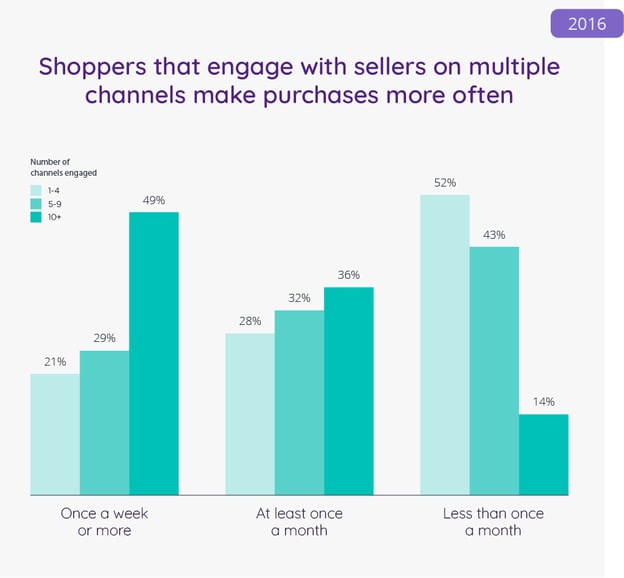
More and more, we’re seeing the value of omnichannel shoppers. Research has found that the most loyal customers who make repeat purchases are the ones who engage with a business across several channels.
For example, customers who engage with a retailer on between one to four channels are likely to make less than one purchase per month. Meanwhile, customers who engage on 10 or more channels are the most likely to make a purchase once a week or more.
Companies that have a solid omnichannel strategy see numerous benefits over companies with no omnichannel strategy, including better average annual revenue growth, average year-over-year customer cost savings, and average customer retention.
When marketing and selling across multiple channels, it’s even more important for digital retailers to ensure their product data is consistent and up to date on every channel. PIM software that centralizes that data is the best way for businesses to rest assured that product data is always accurate—no matter what channel a customer engages with.
The PIM Market is Thriving Around the Globe
That 25 percent compound annual growth rate in the PIM market?
It holds steady around the globe, even in regions with smaller markets (for now).
North America and Europe are currently the largest PIM markets globally, but the Asia Pacific is growing most rapidly. While Latin American, Middle Eastern, and African markets are currently the smallest, they’re seeing more rapid growth than North American and European markets.
The Product Information Management Revolution is Here
If there’s anything all these trends and charts show, it’s that the PIM revolution is upon us—and online retailers are gonna need a great one if they want to keep up with their competition.
Looking for a software solution that’s scalable and secure and allows you to centralize, optimize, distribute, and analyze product data to stay ahead of your competition? Good, you should be! Download The Ultimate PIM Buyer’s Guide for free and learn everything you need to know to choose the PIM solution that best fits your business’ needs.

What if your product data actually worked for you?
We’ll show you how Plytix helps you stop fixing data—and start using it.
Related posts
Keep the good stuff coming
Subscribe to our blog newsletter and get monthly content that helps you manage product data smarter.
No spam. Just real value.






Think others should see this?
Go ahead and share it.